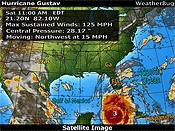Why Work When You Can Get Welfare?
 Thursday, January 3, 2013 at 01:44PM
Thursday, January 3, 2013 at 01:44PM Why Work When You Can Get Welfare?
http://educationviews.org/why-work-when-you-can-get-welfare/
by Henry W. Burke
12.19.12
STARTLING STATISTIC: The average wage for a working family is $24.00 per hour while the average wage for a welfare family is $23.55 per hour.
Are welfare benefits for individuals and families overly generous? Does welfare discourage people from seeking employment? Is there a connection between large welfare benefits and the number of people dropping out of the work force?
Means-tested welfare programs include those benefits that are provided only to poor and lower-income persons (e.g., food stamps, public housing, Medicaid, and Temporary Assistance to Needy Families).
It is important to have a complete understanding of the vast welfare system in this country; welfare is much broader and far more expensive than most people think.
Welfare Spending Is Out of Control!
In spite of spending $19.8 trillion on welfare since 1965, the poverty rate has remained relatively constant (around 15 %)! Obviously, the government's welfare programs are not working!
Welfare spending has been the fastest-growing part of government spending for the past two decades, with nearly a 300 % increase! Welfare in this country is a massive complex of 79 federal means-tested anti-poverty programs.
http://budget.house.gov/UploadedFiles/rectortestimony04172012.pdf
By any measure, welfare is huge! Federal welfare spending for Fiscal Year 2011 was $717 billion; when state spending is included, total welfare spending for FY 2011 was $927 billion! Under Obama, total welfare spending (federal plus state) has grown from $714 billion in 2008 to $927 billion in 2011. Welfare spending in 2012 will likely be around $973 billion. This is a 36 % increase in four years!
Means-Tested Welfare Spending
(Billions of Dollars)
|
Fiscal Year |
Federal ($ Billions) |
State ($ Billions) |
Total ($ Billions) |
|
2007 |
$469 |
$189 |
$658 |
|
2008 |
$522 |
$192 |
$714 |
|
2009 |
$613 |
$167 |
$780 |
|
2010 |
$695 |
$193 |
$888 |
|
2011 |
$717 |
$210 |
$927 |
Source: The Heritage Foundation
http://budget.house.gov/UploadedFiles/rectortestimony04172012.pdf
Recent information from the Congressional Research Service places welfare spending slightly higher. In Fiscal Year 2008, the federal government spent $563 billion on welfare. Welfare spending in 2009 was $692 billion; welfare spending in 2010 was $733 billion; and welfare spending in 2011 was $746 billion. Final figures are not available for 2012 but welfare expenses will likely total about $770 billion for this year (FY 2012).
This is the link for the 10.16.12 letter from the Congressional Research Service to the Senate Budget Committee: federal means-tested spending
The Cato Institute recently released a comprehensive report on welfare in America. The authors detailed numerous separate federal anti-poverty programs, with a total 2011 cost of $668.2 billion. The single largest welfare program today is Medicaid at $228 billion. The food stamp program (SNAP) is the second largest program at $75 billion.
http://www.cato.org/pubs/pas/PA694.pdf
When the $668 billion in federal spending is combined with the $284 billion in state spending, the result is total 2011 welfare spending of $952 billion (nearly $1 trillion per year)!
[$668.2 billion federal + $284 billion state = $952.2 billion total]
Cost of Largest Welfare Programs
(Billions of Dollars)
|
Program |
2011 Federal Cost ($ Billions) |
Number of Participants (Millions) |
Cost per Participant ($1) |
|
Medicaid |
228.0 |
48.9 |
4,663 |
|
SNAP |
75.0 |
44.2 |
1,697 |
|
EITC |
55.0 |
27.0 * |
2,037 / h |
|
SSI |
43.7 |
8.1 |
5,395 |
|
Federal Pell Grants |
41.0 |
9.6 |
4,265 |
|
TANF |
21.0 |
4.5 |
4,675 |
|
Section 8 Housing |
18.1 |
2.0 * |
9,050 / h |
|
Very Low Housing Loans |
16.7 |
131,370 ** |
127,122 / u |
|
Title 1 Education Grants |
14.1 |
N/A |
-- |
|
CHIP |
13.5 |
7.7 |
1,747 |
|
National School Lunch |
10.9 |
31.0 |
352 |
|
Adjustable Rate Mortgages |
10.6 |
43,687 ** |
242,635 / u |
|
Subtotal |
547.6 |
-- |
-- |
|
Other Programs |
120.6 |
-- |
-- |
|
Total Welfare Programs |
668.2 |
-- |
-- |
Source: Cato Institute, Policy Analysis No. 694, The American Welfare State: How We Spend Nearly $1 Trillion a Year Fighting Poverty - and Fail, April 11, 2012.
http://www.cato.org/pubs/pas/PA694.pdf
Notes:
* Households (h)
** Units (u)
Medicaid -- Health care for poor (excludes long-term care)
SNAP -- Supplemental Nutrition Assistance Program
EITC -- Earned Income Tax Credit
SSI -- Supplemental Security Income
TANF -- Temporary Assistance for Needy Families
CHIP -- Children's Health Insurance Program
[When figures from this table are extended for a family of four, the result is a welfare benefit of around $32,000 per family.]
Welfare Spending Per Person and Per Family
It is useful to know how much we spend on welfare per person in this country. We should also know the average welfare benefit per family. With many overlapping welfare programs, it is difficult to determine the average benefit received by low-income persons. Two separate studies are considered -- The Cato Institute and The Heritage Foundation.
The Cato Institute determined that the government spends $20,610 for every poor person in America. The spending for a family of three is $61,830.
http://www.cato.org/pubs/pas/PA694.pdf
Cato placed total FY 2011 welfare spending (federal plus state) at $952.2 billion. When this is divided by 46.2 million people in poverty, the result is $20,610 per person.
[$952,200 million / 46.2 million persons = $20,610 per person]
Then, the welfare spending for a family of three is $61,830.
[$20,610 x 3 persons = $61,830 per family]
Compared with the poverty threshold for that family of $18,530, we should have wiped out poverty in America three times over!
Welfare Spending Per Person and Per Family (FY 2011)
|
Description |
Spending per Person |
Spending per Family |
|
Poverty Threshold |
-- |
$18,530 |
|
|
|
|
|
Welfare spending per person |
$20,610 |
-- |
|
Welfare spending per family of three |
-- |
$61,830 |
Source: Cato Institute, Policy Analysis No. 694
http://www.cato.org/pubs/pas/PA694.pdf
The Heritage Foundation provided some useful analyses on welfare spending per person and per family.
According to the U.S. Census Bureau, there were 46.2 million poor persons in the U.S. in 2011; the poverty rate was 15.0 % and the median household income was $50,054.
http://www.census.gov/prod/2012pubs/p60-243.pdf
Heritage determined that the average welfare benefit per person is $20,069.
http://www.heritage.org/research/testimony/2012/05/examining-the-means-tested-welfare-state
One way of estimating the average welfare benefit per person would be to divide the total welfare spending by the total number of poor persons in the U.S. Total welfare spending (federal plus state) was $927.2 billion for FY 2011. If this sum is divided by 46.2 million poor persons, the result is $20,069.
[$927,200 million / 46.2 million persons = $20,069 per person]
[This calculation is quite similar to the Cato Institute computation.]
The Heritage Foundation's modified calculation places the average welfare spending at $9,040 per person in 2011; the average welfare spending for a family of four is $36,160.
The simple $20,069 calculation can be misleading because many people with income above the official poverty level also receive means-tested welfare aid. Because most welfare aid is targeted to people in the lowest-income one-third of the population, this is a more accurate figure. (One-third of the 308 million total population equals 102.6 million people.) When the $927.2 billion total welfare spending is divided by 102.6 million people, the result is average welfare spending of $9,040 per person in 2011. For a family of four, the average welfare spending is $36,160.
[$9,040 per person x 4 persons = $36,160 per family]
Another way of examining welfare spending is to look at welfare spending on families with children. Heritage determined that average welfare spending on a family with children is $33,000.
In FY 2011, total welfare spending was $927 billion. About half of the 2011 spending ($462 billion) will go to families with children. There are about 14 million families in the lowest-income one-third of families with children. If the $462 billion were divided equally among these families, the result would be around $33,000 per low-income family with children.
[$462,000 million / 14 million families = $33,000 per family]
In addition, most of these lower-income families have some earned income. The total income (welfare benefit plus earned income) for a family is $49,000.
Average earnings within this group are typically $16,000 per family. When this earned income is added to the welfare benefit, the resulting total income is $49,000.
[$33,000 + $16,000 = $49,000]
However, during this recession, the earnings might be somewhat less, say about $8,000. The total "recession" income for a welfare family is $41,000.
If this "recession" earnings figure of $8,000 is added to the welfare payments, the result is $41,000.
[$33,000 + $8,000 = $41,000]
When we look at average total earnings of $41,000 to $49,000 per family (welfare benefits plus earned income), it is difficult to believe the claims that millions of lower-income families are chronically hungry, malnourished, or without good housing.
After all, many families live quite well on $41,000 per year! Also, the $49,000 total income figure is extremely close to the median household income of $50,054 (Census Bureau amount for 2011).
Welfare Benefits Per Person and Per Family (FY 2011)
|
Description |
Benefits per Person |
Benefits per Family |
|
Welfare benefits for low-income persons |
$20,069 |
-- |
|
Welfare benefits for bottom one-third income |
$9,040 |
$36,160 |
|
Welfare benefits for families with children |
-- |
$33,000 |
|
Welfare benefits for families + earned income |
-- |
$49,000 |
|
Welfare benefits for families + recession income |
-- |
$41,000 |
Source: The Heritage Foundation, Examining the Means-tested Welfare State: 79 Programs and $927 Billion in Annual Spending, May 3, 2012
http://www.heritage.org/research/testimony/2012/05/examining-the-means-tested-welfare-state
The Cato and Heritage reports concluded:
1. Cato -- The total welfare spending in 2011 (federal plus state) for a family of three is $61,830.
2. Heritage -- The total welfare benefit in 2011 (federal plus state) for a family of four is $36,160.
3. Heritage -- The total 2011 welfare benefit for a family with children is $33,000.
4. Heritage -- The total 2011 income for a family on welfare (federal and state welfare benefits plus earned income) is $49,000.
5. Heritage -- The total 2011 income for a family on welfare (federal and state welfare benefits plus "recession" earned income) is $41,000.
Corresponding Hourly Wages:
1. The median annual income for 2011 was $50,054. At 2,080 hours per year, the corresponding hourly wage would be about $24.00 per hour. (This calculation is based on one person earning the income for the family.)
2. For the welfare family with total income of $49,000, the corresponding hourly wage is $23.55 per hour.
3. The hourly wage for the 2011 working family is $24.00 per hour. This compares with an hourly wage of $23.55 in the welfare family.
Welfare Spending vs. Unemployment
Under Obama, total welfare spending (federal plus state) has grown by 36 % in four years!
Obama's supporters say that the recession caused the growth in welfare spending and that the spending increases are only temporary. These ideas may seem plausible but we need to do some "fact checking." As borne out by the long-term spending plans in his 2013 budget, most of Obama's increases are permanent expansions of the welfare state.
One of the measures of an economy is the employment situation. The following table shows the employment picture for Obama's nearly four-year term.
Unemployment Under Obama
(Millions of Persons)
|
Date |
Number Employed |
Employed Change |
Unemployment Rate |
Not in Labor Force |
Not in Labor Force Change |
|
Jan. 2009 |
142.099 |
-- |
7.6 % |
81.023 |
-- |
|
Jan. 2010 |
138.511 |
- 3.588 |
9.7 % |
83.663 |
+ 2.640 |
|
Jan. 2011 |
139.330 |
+ 0.819 |
9.1 % |
85.454 |
+ 1.791 |
|
Jan. 2012 |
141.637 |
+ 2.307 |
8.3 % |
87.874 |
+ 2.420 |
|
Nov. 2012 |
143.262 |
+ 1.625 |
7.7 % |
88.883 |
+ 1.009 |
|
3.8-Yr. Term |
|
+ 1.163 |
+ 0.1 % |
|
+ 7.860 |
Source: Bureau of Labor Statistics (BLS)
http://www.bls.gov/news.release/empsit.nr0.htm
When Obama was sworn into office in January 2009, the unemployment rate was 7.6 %; it is 7.7 % today. In January 2009, 142.099 million people were employed; 143.262 million persons are employed today. In spite of a population growth of 9.4 million people in this 3.8-year period, employment has grown by only 1.2 million people.
Under Obama, the number of people "Not in Labor Force" has increased by 7.860 million persons. Clearly, 7.9 million people have dropped out of the work force and have given up looking for work.
Instead of helping the truly needy, the welfare programs have exacerbated the problem by encouraging many people to drop out of the work force and become dependent on the government. This discourages self initiative and traps people in the welfare system for many years.
CONCLUSION
Most compassionate Americans (including conservative Republicans) believe in a safety net for the truly needy. We should provide assistance for the elderly, the mentally or physically-disabled, and those people who cannot work. On the other hand, when the government is overly generous with the welfare programs, it destroys the incentive to work.
The average welfare family has a total income of $49,000. This is very close to the median annual income of $50,054.
The corresponding average wage for the welfare family is $23.55 per hour; the average wage for the working family is $24.00 per hour.
Under Obama, welfare spending has increased by 36 % in four years. The food stamp program has simply skyrocketed, with a 116 % increase in cost during Obama's term.
Through our very generous welfare programs, we have taken away much of the incentive to find employment and leave the welfare rolls.
Our population has grown by 9.4 million people in the last four years yet the labor force has expanded only slightly. Under Obama, 7.9 million people have dropped out of the work force and have given up looking for work.
There is a clear connection between the number of people dropping out of the work force and our overly generous welfare programs. Why work when you can receive welfare?
ACTION STEPS
The current concept behind how we fight poverty is wrong! The vast majority of our welfare programs are aimed at making poverty more comfortable (better health care, money, food, shelter and so forth). Instead, we should focus on creating the prosperity that will get people out of poverty.
Actually, we have a pretty solid idea on getting people out of poverty: (1) finish school; (2) do not get pregnant outside of marriage; and (3) get a job and stick with it.
==============================
The following article makes the connection between our burgeoning welfare spending and the fiscal cliff: "Elephants and the Fiscal Cliff," by Henry W. Burke, 12.12.12.
http://educationviews.org/elephants-and-the-fiscal-cliff/
===============================
Bio for Henry W. Burke
Henry Burke is a Civil Engineer with a B.S.C.E. and M.S.C.E. He has been a Registered Professional Engineer (P.E.) for 37 years and has worked as a Civil Engineer in construction for over 40 years.
Mr. Burke had a successful 27-year career with a large construction contractor.
Henry Burke serves as a full-time volunteer to oversee various construction projects. He has written numerous articles on education, engineering, construction, politics, taxes, and the economy.
Henry W. Burke
E-mail: hwburke@cox.net









